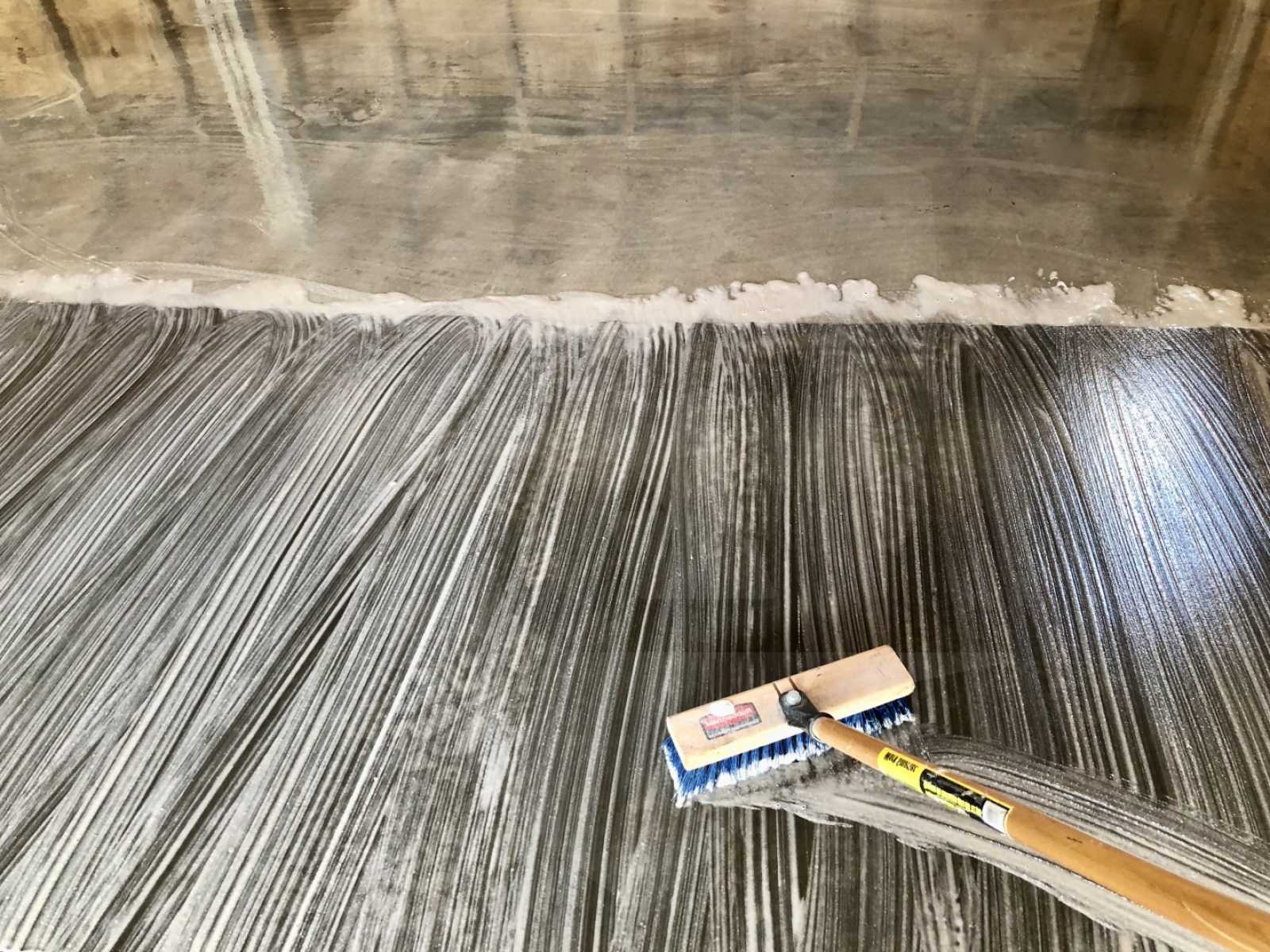Muriatic acid is the type of acid that is typically used for etching concrete. It can be highly toxic so we recommend using the Hydro-Etch 1000, a specialized muriatic acid and phosphoric acid blend which has less fumes than regular muriatic acid and is used to clean concrete, brighten concrete and etch concrete.
Before acid etching, make sure the concrete is free of all oil, contaminants, grease, and dirt. Contrary to what many people think, acid will not clean grease and oil spots. In fact, if these areas have not been cleaned and degreased properly, the acid solution will just sit on top and not react with the concrete.
Dampen the concrete: Use your hose to lightly spray down the concrete in your garage so that the concrete is wet but not puddling water. If you have a large floor, you may want to acid etch in sections. Do not let the concrete dry out before or during application of the acid solution.
Apply the acid solution: Use the 2 gallon plastic watering container to sprinkle the acid solution on the concrete. This will spread the solution evenly without much splashing. Do not just pour it on the concrete. This will create an inconsistent spread of the acid solution and will not provide for a uniform result. The 2 gallon container works well because you can mix 1.5 gallons of water to .5 gallons of acid for a 3:1 ratio. You can use any size you like however, as long as you mix the ratio of acid to water correctly. 1 gallon of acid solution will cover approximately 50 – 70 square feet of garage floor.
Scrub the acid solution: Once the solution is applied, lightly scrub it into the concrete with a push broom or long handled scrub brush. This helps to create a uniform etch of the concrete. Let the solution sit from 2 – 15 minutes while it continues to fizz and bubble. Do not let the floor dry out during this process. Add more solution if necessary.
Neutralize: Mix 4 cups of baking soda to 1 gallon of water in your large 5 gallon bucket and pour it into the now empty watering container. Or use 4 ounces of household ammonia to 1 gallon of water. Sprinkle your neutralizing solution over the part of the floor that was acid etched and let it sit for a minimum of 10 minutes. When time is up, rinse the neutralized solution with your hose into a drain or out the garage (if local water codes allow it). Another method is to use a wet vac and then dispose of the solution according to your local codes. Check the surface of the concrete at this time. It should feel similar to medium grit sand paper with a uniform texture. If not, you will need to repeat the process again.
Final rinse: Once the initial neutralizing solution is cleaned up, it is important to thoroughly flush and rinse the remaining solution out of the concrete multiple times. It can leave a white powdery residue on your floor once dried (called calcium carbonate) if you do not do this. This is a fine dust that will not allow your coating to adhere properly. Use a high pressure nozzle while thoroughly scrubbing the concrete with your scrub brush. You can introduce a mild solution of Simple Green at this point if you like. Just make sure it is thoroughly rinsed. Using a pressure washer at this point works well also. Do not use a pressure washer to rinse off the initial neutralizing solution however. It can drive any acid solution that had not been neutralized yet deeper into the concrete and cause problems later.
- pH test your rinse water: After your final rinse, dab a pH test strip onto the still wet floor to check the pH. Anything between 6.0 and 9.0 will work for most coatings with 7.0 (neutral) being ideal. If it’s below 6.0 then the water is indicating that acid residue is still in the pores of the concrete. Rinse some more and repeat the test until you get the results you want.
Further Tips for Acid Etching Concrete:It’s a good idea to cover anything that you don’t want to get splashed with a plastic drop cloth. Don’t acid etch the concrete if the temps are below 50 degrees as the acid will not be as effective with the cooler temperatures. Also, make sure your floor has dried thoroughly before applying a concrete sealer. Fans will help. Give it at least two days with warm weather and longer if it’s humid or cooler. Though the surface may be dry, the pores of the concrete can still contain moisture and escape through outgassing when the temperatures rise during the day. This will cause your coating to not properly adhere. You can always do a quick moisture test with plastic if you are not sure.
For an even safer concrete etching product use the Eco-Etch 1001: a safe, powerful, 100% biodegradable concrete cleaner with no acid, solvents or VOC's specifically formulated to clean, brighten and etch concrete without any harmful effects. Although it ususally does not create as much surface profile as using straight muriatic acid, it does an excellent job at giving concrete light surface profile.

